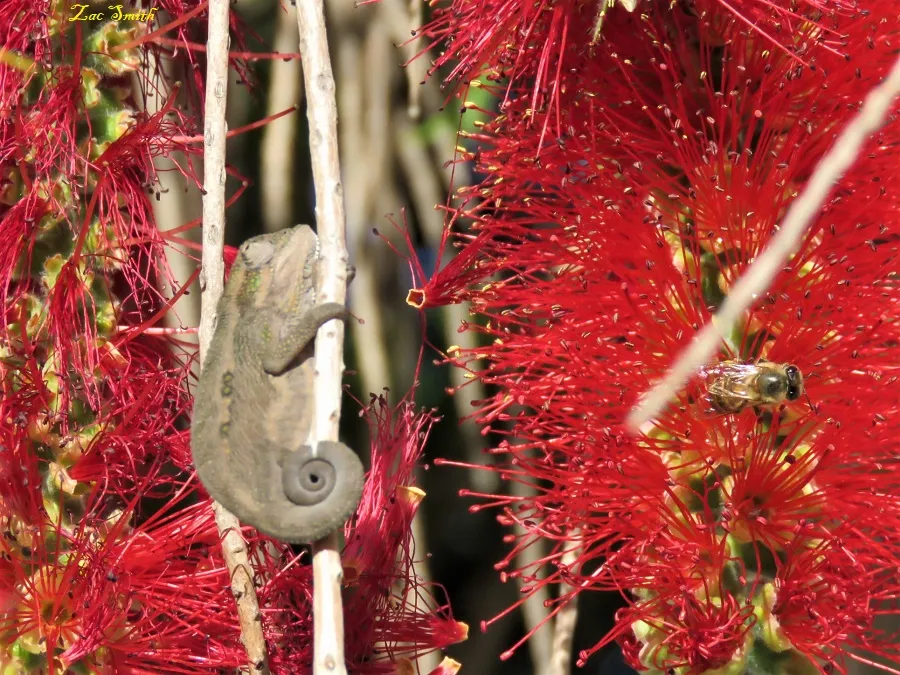
Come and see mother nature's little miracles, as the babies are only 2 cm at birth!
Some of you have seen previous posts of the dwarf chameleons that live here at our complex in the Western Cape Province of South Africa.
The Cape Dwarf Chameleons are only found in Cape Town and surrounding areas.
In order to bring you up to speed, I have entered the dates of the photos when I took them.
Come and have a look at who showed up today.
The first 2 photos we taken by me on 02 September 2019.
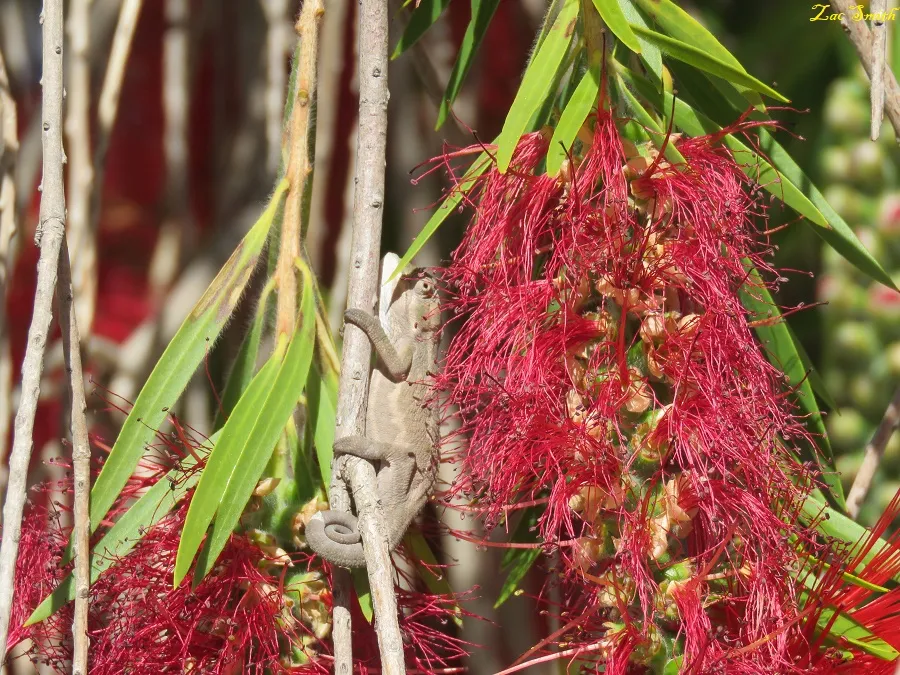
I remember the delight when I saw them for the first time. Gawping at them like a fish out of water!
The next 2 photos were taken by me on 29 August 2019

Mommy at the left and the baby to the right of the picture!
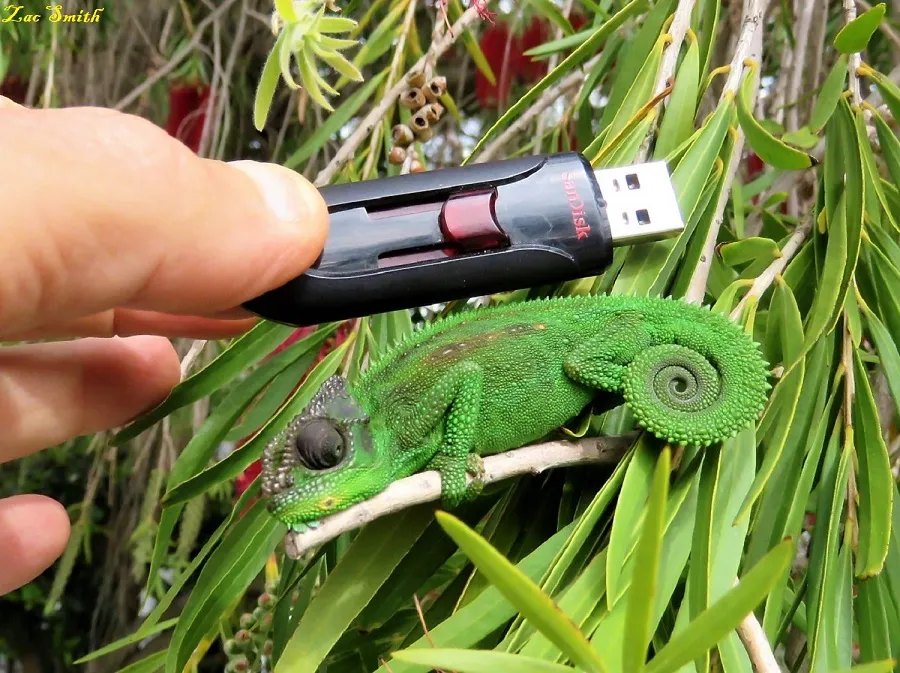
A USB dongle to show you why they are called dwarfs. This is the adult mom that is not bigger than my thumb!
The next 2 photos were taken by me on 28 August 2019.
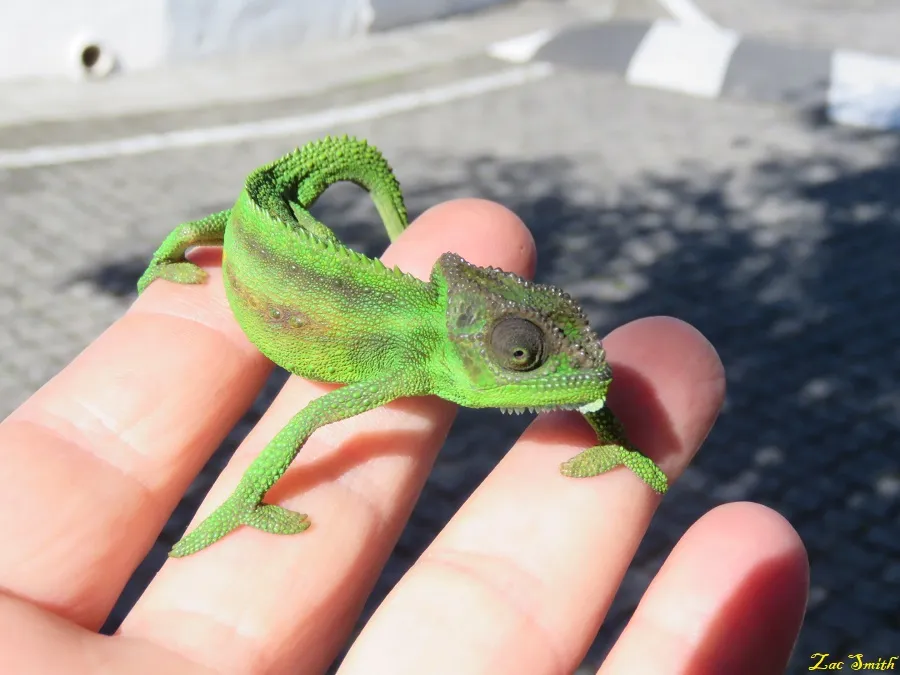
Just look how lovely she is and her darker colors signify that she is a female!

The baby of course was still dull colored and his size was about 2 or 3 cm (Centimeters)!
The last 3 photos were taken by me today 7 January 2020
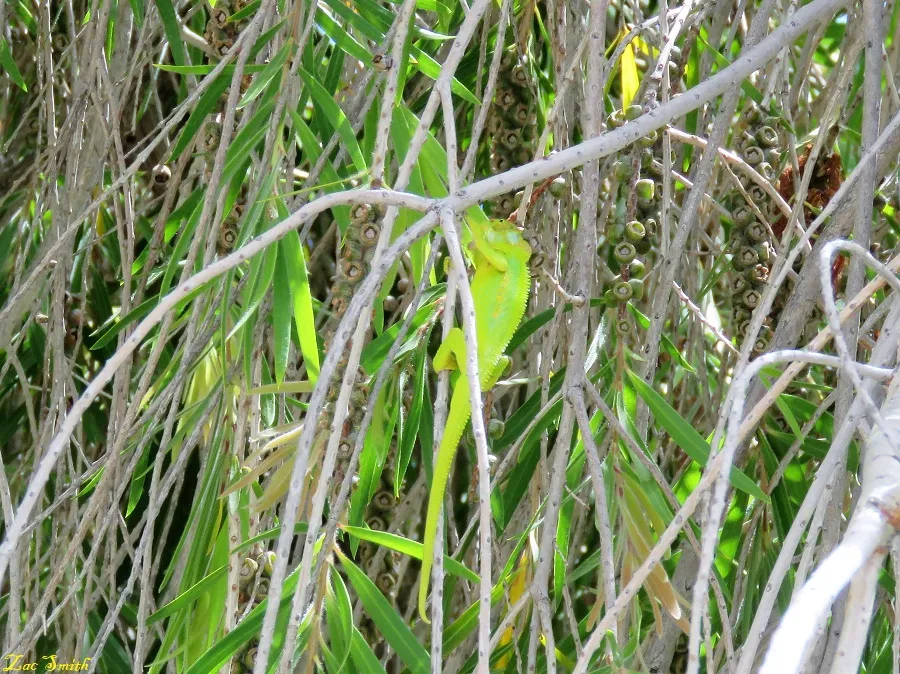
And here is the baby today. A male, due to his bright colors, and also camouflaged to match the sun's color on the tree leaves!
It is human nature to catch and hold them, but I decided never to touch them again.
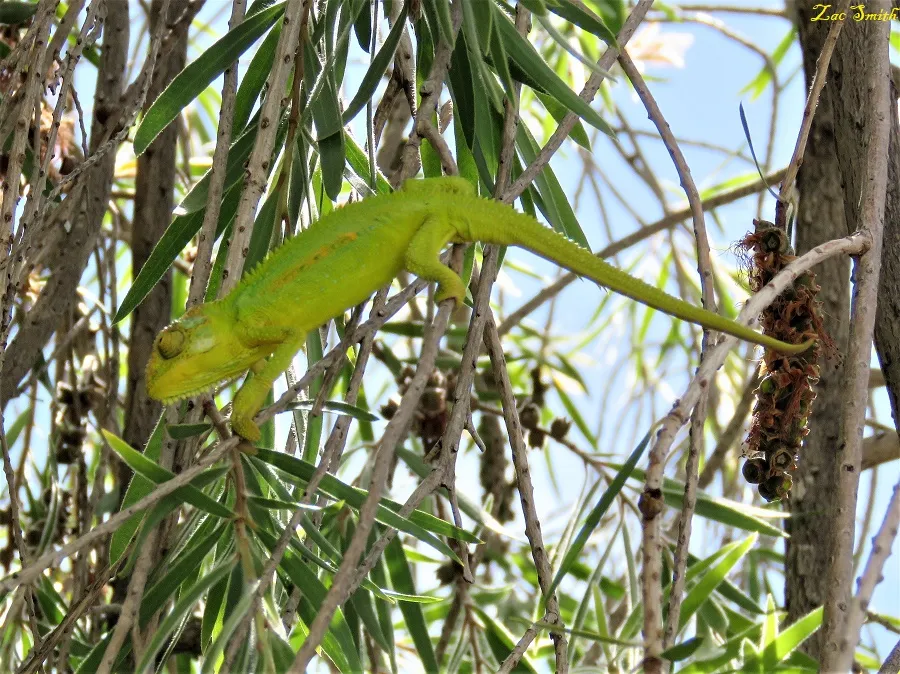
I was so delighted to see him again, as he is now a teenager and his growth means that there is plenty of food available for them!

A strong young climber hunting insects to strike with his tongue.
Did you know that their tongue rolled up in the sac below their mouths is twice as long as their entire length.
It is spring loaded and they can strike an insect with it in milliseconds!
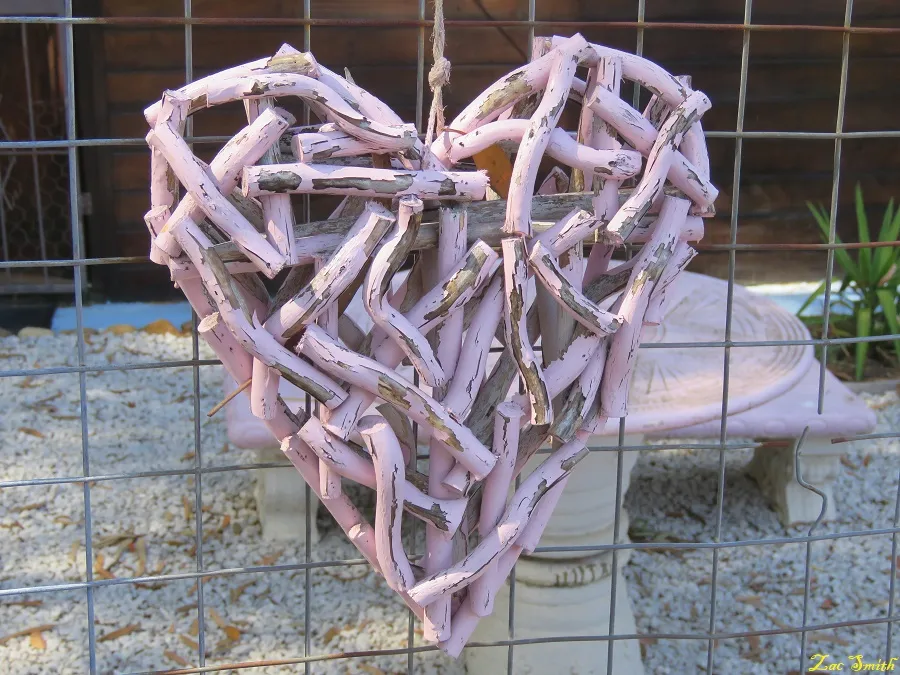
And the final picture is just to show some love to all of you with this arty heart symbol.
Some more facts here about the Cape Dwarf Chameleons;
"The Cape dwarf chameleon grows to over 15 cm (5.9 in) in length, including the tail, with males and females reaching similar adult sizes. They are ovoviviparous, but examination in controlled captivity has shown the very soft egg-like membrane around the young is discarded immediately on birth. The young resemble miniature versions of the adults, with muted colours, and typically reach no more than 2 cm in length at birth. Adults can vary quite significantly in colour variety, saturation and pattern, some appearing much more vibrant than others. Like most chameleons, the tail is prehensile, and the feet are well evolved to grasping twigs, with minute claws on the end that improve grip".
"Normally very slow moving, chameleons have a characteristic shake, which may make them look more like leaves to prey and predators. When provoked, they can speed up to several centimetres a second. When further provoked, they may inflate themselves, hiss, change colour dramatically, and bite. They do not have sharp teeth, so their bites rarely inflict more than a slight pinch".
These chameleons are protected by government laws and yet people catch and sell them as pets. I have been asked many times to reveal their location, but it is my secret and that's why they are flourishing.
Note: All photos and photo descriptions are my own and only the last sections marked with inverted commas ("") are not my own and its source was duly cited!
We hope that you have enjoyed the pictures and the story and thank you for visiting the blog of @papilloncharity


 Connecting the people of #STEEM across South Africa. #steemsa JOIN US ON DISCORD (South Africans Only) JOIN US ON TWITTER JOIN US ON FACEBOOK
Connecting the people of #STEEM across South Africa. #steemsa JOIN US ON DISCORD (South Africans Only) JOIN US ON TWITTER JOIN US ON FACEBOOK  Team South Africa banner designed by @bearone
Team South Africa banner designed by @bearone